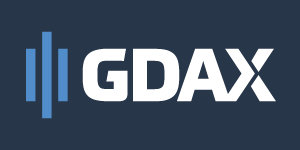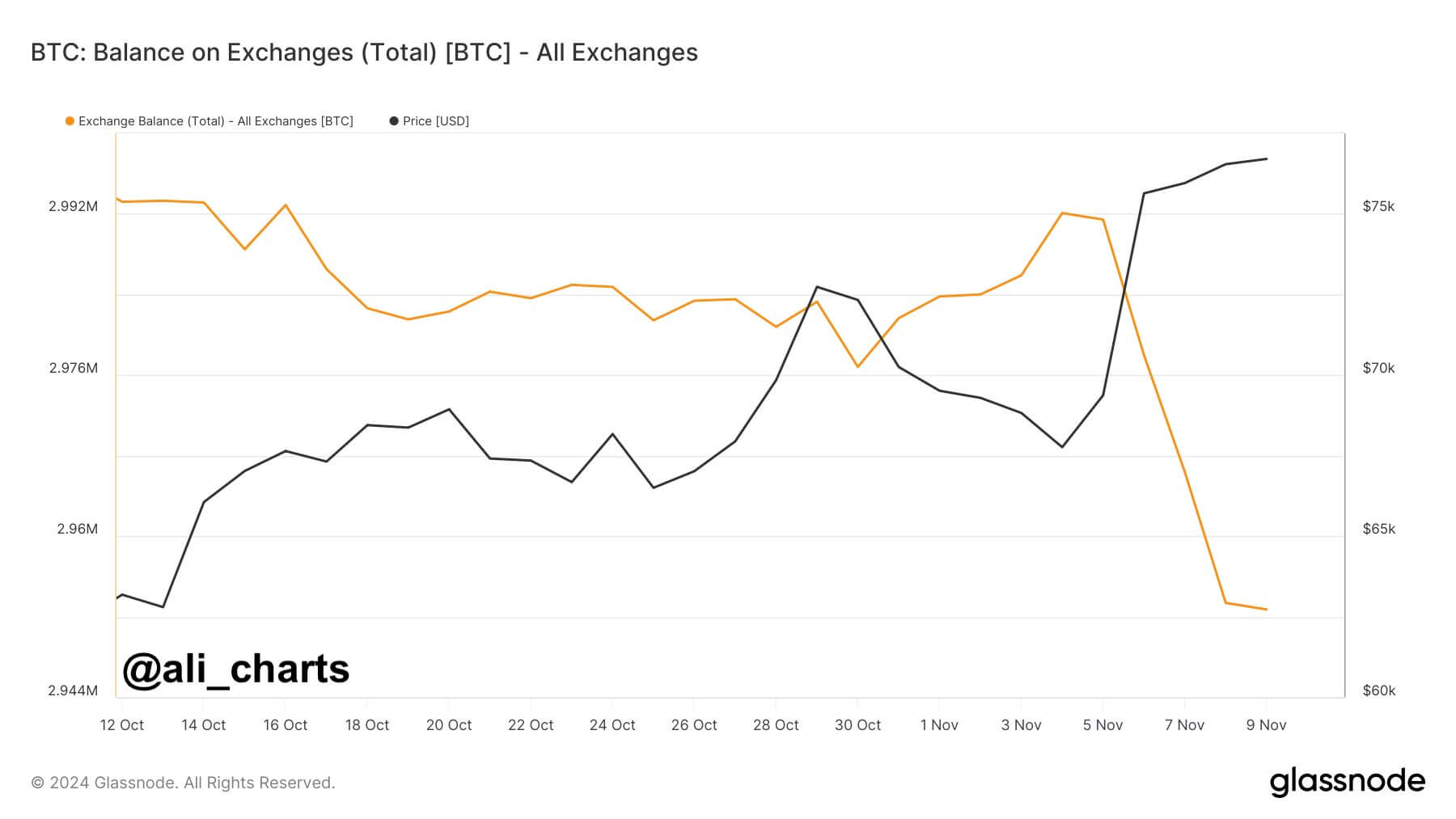
2019-2-25 00:48 |
Trading Accounts
Account type Minimum deposit Leverage Taker Fee Maker Fee Standard Undisclosed 1:3 Up to 0.25% 0%
GDAX, which stands for Global Digital Asset Exchange, is a trading platform launched by the Coinbase in May of 2016. While some of you may know Coinbase for the ability to buy Bitcoin directly by Credit Card, GDAX is the other part of the company – the exchange that was created to accommodate not only Bitcoin trading but trading in alternative currencies as well. The exchange operates all around the world and is owned by the Coinbase Inc, which is based in San Francisco, California. GDAX is aimed at traders, trading fees are much lower and margin trading is available.
The platform is insured and backed by some of the largest investors in the industry, including Union Square Ventures, Andreessen Horowitz, the New York Stock Exchange, and many others.
One more thing worth noting is that customer funds are also FDIC insured. This means that each customer is entitled to up to $250,000 in remuneration in the event of a loss.
The Company – Security of Funds
As mentioned above, GDAX is actually run by the same company that owns Coinbase. It’s important to note that the company holds the New York BitLicnese. The New York Department of Financial Services (NYDFS) attempted to make the city a major Bitcoin trading center, but one may argue the idea backfired, because many of the key players backed-out of the 2015 proposal. As of the summer of 2017 only three companies have received the license, and this is due to the burdensome and slow regulatory procedure. Coinbase is one of those three companies.
When it comes to hacking, it’s important to note that a major attack has not struck Coinbase or GDAX. That being the case, there was a “flash crash” in Ethereum prices in June. This raises suspicion. The coin was trading at about $317, when it suddenly spiked to an alleged value of 10 cents due to a multimillion-dollar market sell order. The company proceeded to halt trading. They later claimed this was merely a “fat finger” – single large trader accidentally placed a market sell order, which triggered a chain of stop-loss orders to be executed.
The fall caused quite the commotion among traders who woke up to chunks or all of their Ethereum gone because of the GDAX crash. However, the Coinbase team handled it fairly well.
GDAX took responsibility for the flash crash and honored every single transaction using company funds. The financial damage was mitigated. However, users still noted that the lack of accessibility to the platform during the crash was aggravating.
Other than this case, the user reviews for GDAX generally match the ones for Coinbase, the founding company of GDAX. One of the major concerns is the fact that many of the investors behind the project are well-established in the traditional financial sector.
Verification on GDAX
The verification is necessary and GDAX requires two level identity verification. Users are not allowed to place deposits or trade before the verification process is completed.
The verification process is straightforward. However, it’s a bit different depending on the country.
For UK users:
A photo of a Passport, driver’s license, or ID card. They have to answer to a few identity questions.For US users:
A photo of a driver’s license or state ID (passports don’t indicate the state of residence, so they are not accepted). The residential address SSN (Social Security number)For other users (European countries, Canada, Australia, and Singapore):
A photo of a Passport, driver’s license, or ID card. Another photo of a different ID document.Users who are already registered on Coinbase can log in with their Coinbase credentials, and they don’t have to create an account from scratch
Trading Conditions
Trading Instruments (Cryptocurrencies)
When it comes to digital currencies, there are only three matching currencies available at GDAX, namely Bitcoin (BTC), Ethereum (ETH), and Litecoin (LTC).
The exchange currently supports three FIAT currencies, namely GBP, EUR, and USD.
Depending on the country, available trading pairs can vary:
US – LTC/BTC, BTC/USD, LTC/USD, ETH/USD, ETH/BTC Singapore – LTC/BTC, ETH/BTC Australia – LTC/BTC, ETH/BTC Europe – ETH/BTC, BTC/EUR, LTC/BTC The United Kingdom – ETH/BTC, BTC/GBP, LTC/BTC Canada – LTC/BTC, ETH/BTCOn top of that, GDAX also allows users to trade using a variety of different strategies, including:
Margin Trading – This means you can margin trade with a leverage between 2x and 3x depending on the crypto trading pair, which is a very risky way to go about trading. However, the upside can be enormous. Stops – This allows you to set stop losses. This means that if the price drops to a certain threshold, GDAX will automatically sell a specified amount of your cryptocurrency. Limit Buys – This feature allows users to set a price limit that you want to purchase something at. For example, if you think the price of Bitcoin is going to drop overnight, you can set a limit buy for a lower price, and if the price does drop, GDAX will fulfill your order at the lower price. Market Buy – This is pretty standard on any exchange and can also be done on Coinbase. However, you will pay a lower fee if you do it on GDAX.Minimum Initial Deposit
There is no information on the minimum initial deposit at GDAX. However, this is not that unusual in the cryptocurrency sphere. On the other hand, most forex brokers have such a level and disclose it on their websites, for example the FCA-regulated industry pioneers at IG proudly announce they do not have a minimum. This means that you can open an account for as low as you want.
Fees
The costs of trading at GDAX are a lot lower than the ones available at Coinbase, and it’s based on the percentage of monthly volume.
When trading on the exchange, market “makers” do not pay a fee. On the other hand, market “takers” pay fees starting from 0.25% and going down for the bigger traders. The fee schedule looks like this:
> 0% (~0 BTC) – 0.25%
> 1% (~2,114 BTC) – 0.24%
> 2.5% (~5,287 BTC) – 0.22%
> 5% (~10,574 BTC) – 0.19%
> 10% (~21,148 BTC) – 0.15%
> 10% (~42,297 BTC) – 0.10%
Both of these levels are very competitive.
One more thing worth noting is that there are no fees for making deposits and withdrawals from GDAX account, only bank fees apply in the case of Wire transfers.
Leverage
Margin trading is available on GDAX, with a maximum leverage ratio of 2x (for LTC/USD pair up to $500, and for BTC/EUR pair up to 3,000 EUR), or 3x (on ETH/USD and BTC/USD pairs, up to a limit of $10,000).
This may sound like nothing in comparison to the 1:500, which a lot of forex brokers offer. However, keep in mind that such high levels only apply for fiat currencies, which rarely have price movements larger than 1-2% per day.
Methods of Payment
Coinbase is obviously the main source of funds and clients for GDAX. However, money can also be sent directly to the exchange, which is a massive convenience tool, because accounts can be funded, without the need of paying the hefty Coinbase fees. That being said, GDAX accepts Bank transfers, while Credit/Debit Card deposits can only be made via Coinbase.
Security
GDAX is very well secured exchange and undergoes regular IT security and financial audits. Plus, they keep keeps 98% of their users’ funds off the Internet in cold storage with encryptions and multisig keys.
There’s two-factor authentication, and email and SMS alerts are available too.
Also, PGP encryption is used in email communication.
Trading Platform
The platform provided by GDAX is much better than the one offered at Coinbase. That being said, we find the charting lacking when compared to the charts provided by TradigView. In terms of technical indicators, only a couple of predetermined moving averages are available. Here is a preview:
The order book is located at the left. But the more bizarre design decision to place the “ask” column on top of the “bids” is made. This feature may seem strange to experienced traders. However, it does provide a nice graphical representation for newbies. The tape is located to the left, with the middle ground being taken by the chart and the open positions tab.
Customer Support
GDAX has a very extensive FAQ page. They also offer ticket submission and email support, and they usually answer within 48 hours. The support can be a bit “shallow” sometimes and only partially resolve the problem. This can result in waiting for another 48 hours to completely resolve the problem.
Conclusion
GDAX is one of the cryptocurrency industry’s biggest, best-known, and most-trusted exchanges. Today, the platform is available in 32 countries worldwide and has 7.4 million users. GDAX is also known for its low fees, especially with the free market “maker” trades.
The selection of trading assets is not great. However, the trading platform feels relatively nice.
GDAX Pros and Cons
Pros
Low Fees Nice trading platform Good liquidity No major hacks International marketCons
Customer support could be way better Few altcoins available A part of Coinbase, which is known for lack of privacy Suspicion regarding a “flash crash” in Ethereum prices
The post Coinbase Pro (Formerly GDAX) Review – Beginner’s Guide appeared first on CaptainAltcoin.
origin »Open Trading Network (OTN) íà Currencies.ru
|
|

